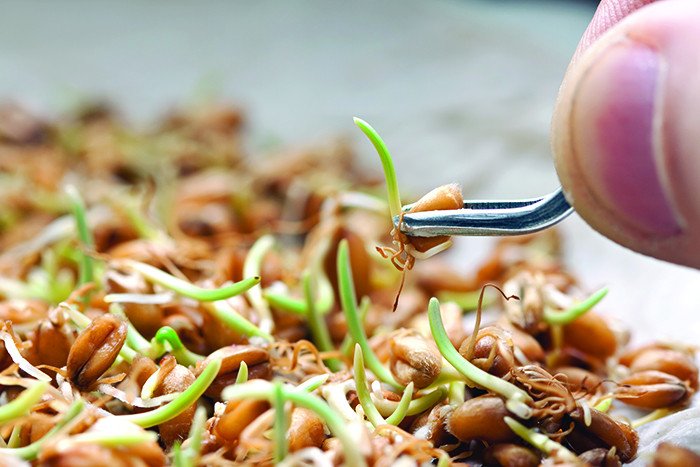Fast-tracking an Improved Wheat Harvest
UNIVERSITY OF CALIFORNIA-DAVIS
PROBLEM
Creating new breeds of wheat that overcome challenges like drought and pathogens takes several years.
SOLUTION
By tracking genetic markers, wheat scientists can shrink the required time to develop new cultivars using conventional breeding techniques.
FUNDING
USDA National Research Initiative (predecessor to USDA NIFA AFRI)
California Wheat Growers Association
RESEARCHERS
Jorge Dubcovsky, PhD, University of California, Davis
Consortium of scientists at 19 universities
Fifty years ago, Norman Borlaug toiled for a decade to breed more productive varieties of wheat. His team’s efforts saved several million people from starvation. Today, Jorge Dubcovsky, PhD, and a team of wheat breeders across the U.S. are accelerating this process by 3-4 years by using genetic marker technologies.
Dubcovsky leads a collaboration of wheat-breeding labs throughout the U.S. whose work has made this acceleration possible. He and his colleagues have mapped out more than 90,000 genetic markers in wheat plants and identified the markers that are linked to further increases in productivity, resistance to dangerous pathogens, and deeper root systems.
Scientists can use this technology to crossbreed varieties and then track through genetic monitoring whether the desired traits have been integrated. In this way, wheat varieties were developed to stop an outbreak of virulent races of stripe rust, which in 2000-2003 wiped out one quarter of the fields planted in California. The new varieties developed by this group can withstand the pathogens without being doused by fungicides and now cover 25% of the California wheat acreage.
Dubcovsky is currently looking at reducing the amount of irrigation water that wheat varieties need by increasing the depth of the roots. This increases “drought tolerance,” the ability of the plant to survive with reduced irrigation. In all, varieties produced through this project currently cover more than 8.5 million acres.
“Our collaborations through USDA allows us to solve problems faster. Instead of competing for scarce funding, we can work together and solve critical problems.”

